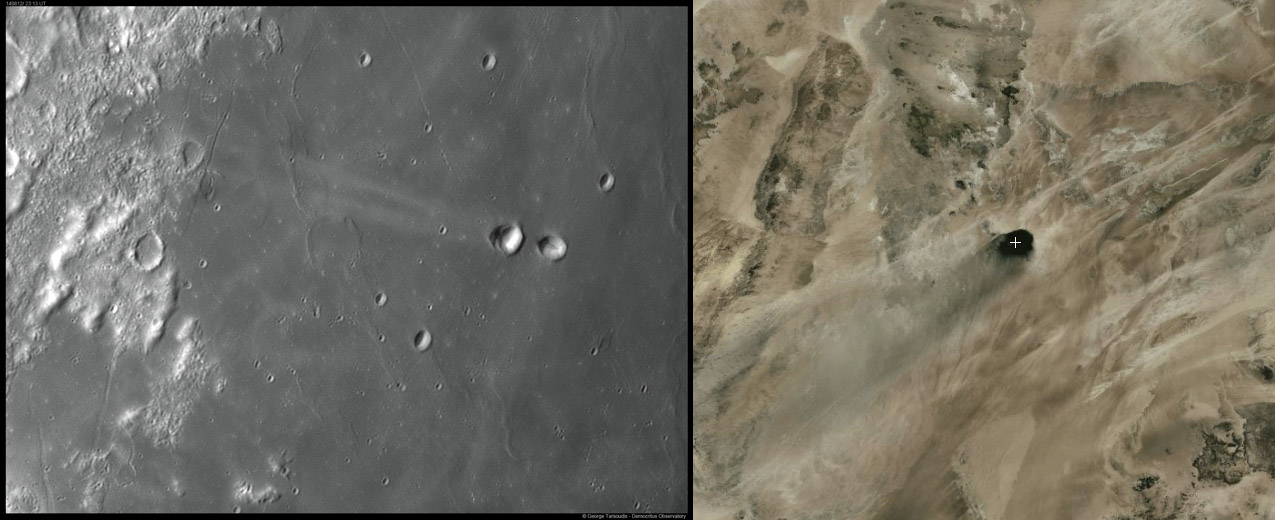August 25, 2014
Comparative Planetology
left image by George Tarsoudis (Alexandroupolis - Greece); right image fom Flash Earth
George has taken an important step beyond imaging. Inspired by his excellent image of the Messier area, George looked for analogs that might relate to its unusual long double ray. And he found one in southern Libya. The dark patch in the right image is ash deposited around the Waw an Namus caldera, and a long tail of ash extends over 300 km. Similarity of landform - a point source with an unusual long tail - suggests that these two landforms on Earth and Moon might be related. But they aren't. The eruption that produced the 10-20 km ash deposit around the caldera has had ash redistributed by the prevailing winds, which blow from the northeast toward the southwest. This can be confirmed by noting the bright sand streamers that are elongated in the same direction. The Waw an Namus ray stands out as being unusually because of its dark hue compared to the bright sand. This pictorial similarity is what makes comparative planetology difficult sometimes. When we see rays behind hills and crater rims on Mars, for example, we can confidently interpret the rays as a wind-blown tail of either deposited or eroded away material. We are confident because we know Mars has an atmosphere and we have witnessed dust storms that deposit material downwind. Looking back at Messier and its ray, we have no evidence that the Moon had an atmosphere or winds, and we have laboratory experiments showing how low angle impact cratering can produce exactly the ricochet craters and downrange (not downwind) ray. So we have two different sources for the ray materials - impact and volcanic eruptions - and two different mechanisms for ray emplacement - downrange ballistic emplacement and wind-blown. Where comparative planetology can become dicey is on a world like Titan, where the resolution is no better than 300 - 1000 m, and the composition and temperature of surface material is beyond human experience. Titan has moving liquids (methane rain, rivers and lakes), and gases (methane-rich atmosphere), and unusual landforms, all of which makes it difficult to confidently recognize impact and volcanic craters.
Chuck Wood
Related Links
21st Century Atlas chart 3.
George's website and Facebook page
COMMENTS?
Click on this icon File:PostIcon.jpg at the upper right to post a comment.




